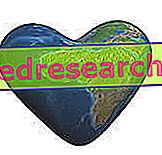What's this
Zinc in short
Zinc is part of many enzyme complexes and is necessary for the proper functioning of many hormones, including insulin, growth hormone and sex hormones. The organism contains it in the muscles, red and white blood cells, but above all in the organs.
Recommended Daily Dose
| Population | PRI * |
| Infants 6-12 months | 3 mg / day |
| Children 1-3 years old | 5 mg / day |
| Children 4-6 years old | 6 mg / day |
| Children 7-10 years | 8 mg / day |
| Male teenagers 11-17 | 12 mg / day |
| Female teenagers11-17 | 9 mg / day |
| Men | 12 mg / day |
| Women | 9 mg / day |
| Pregnancy | 11 mg / day |
| Feeding time | 12 mg / day |
* PRI : recommended intake for the population, from LARN - Recommended Levels of Nutrient Intake for the Italian population
| Population | RDA * |
| Adult Males | 8 mg / day |
| Adult Females | 11 mg / day |
| Pregnancy | 11 mg / day |
| Nursing nurses | 12 mg / day |
| Children up to 12 months | 3 mg / day |
| Children up to 3 years | 8 mg / day |
* RDA : Recommended Dietary Allowances - recommended dietary rations
Zinc in Foods

Foods with zinc
Let's start by pointing out that only 20-30% of the zinc present in food is absorbed by the body but, as with many other nutrients, this process is closely linked to intestinal regulation.
The major sources of food zinc are animal products such as meat, fish, shellfish, poultry, eggs and dairy products.
The concentration of zinc in vegetables varies with the level of the mineral in the soil. With an adequate concentration, the products that take in the largest quantities of metal are wheat (germ and bran) and other starchy seeds - such as legumes - or oily - like sesame. To name a few: poppy, alfalfa, celery and mustard seeds. Other seeds such as beans, nuts, peas, almonds, whole grains, pumpkin seeds, sunflower seeds and black currants are also considered sources of zinc. Sea algae, fortified cereals, soy-based foods, etc. should not be overlooked either.
Note : as we have said above, plant phytates - from phytic acid - hinder the absorption of zinc; this means that people who follow a vegetarian diet, or worse vegan, may need to supplement their zinc intake.
| Food | mg / 100 g |
| Cooked oyster | 181.61 |
| Raw oyster | 90, 81 |
| Breakfast cereals | 12.4 |
| Wheat germ | 12.29 |
| Bovine liver | 12, 02 |
| Poppy seeds | 10, 23 |
| Fresh brewer's yeast | 9.97 |
| Bitter dark chocolate | 9.63 |
| Dry chervil | 8.8 |
| Sesame seeds | 7.75 |
| Cooked lamb leg | 7.69 |
| Cooked lean lamb leg | 7.69 |
| Dried mushrooms | 7.66 |
| Cardamom | 7.47 |
| Wheat bran | 7.27 |
| Food | mg / 100 g |
| Celery seeds | 6.93 |
| Bitter cocoa | 6.81 |
| Muesli | 6.8 |
| Chicken heart | 6.59 |
| Cooked veal shoulder | 6.5 |
| Topside of cooked beef | 6.45 |
| Dry pine nuts | 6.41 |
| Beef ossobuco | 6.4 |
| Dry brewer's yeast | 6.37 |
| Cooked lamb shoulder | 6.31 |
| Whey acid whey | 6.18 |
| Dried thyme | 6.05 |
| Cooked beef side | 5.82 |
| Dried basil | 5.8 |
| Dried agar agar algae | 5.76 |
| Food | mg / 100 g |
| Pig liver | 5.76 |
| Grilled lamb shoulder | 5.72 |
| Mustard seeds | 5.7 |
| Grilled lean lamb shoulder | 5.58 |
| Roast lean lamb shoulder | 5.44 |
| Cooked beef steak | 5.35 |
| Aniseed | 5.3 |
| Egg powder | 5.28 |
| Roast lamb shoulder | 5.23 |
| Lamb leg | 5.22 |
| Dill seeds | 5.2 |
| Braised beef breast | 5.1 |
| Dried pecan nuts | 5.07 |
| Baked fat beef steak | 5.04 |
| Dried shelled sunflower seeds | 5 mg |
Dietary supplements and diet foods or fortified with zinc
Fortified foods and various food supplements are secondary sources of zinc. We try to understand what their role is and their real importance in the global dietary intake of zinc.
A 1998 review concluded that zinc oxide - one of the most common supplements in the United States - and zinc carbonate, being almost insoluble, are poorly absorbed by the body. This study has cited other studies that found lower plasma mineral concentrations in subjects who consumed zinc oxide and zinc carbonate than those who took zinc acetate and sulfate salts - hypothetically better absorbed.
On the other hand, a 2003 revision recommended cereals supplemented with zinc oxide as an economic and sustainable source, as well as easily absorbed compared to more expensive forms.
Another 2005 study found that various zinc compounds, including oxide and sulfate, showed no statistically significant differences in absorption when added as fortifying corn maize tortillas.
shortage
Severe zinc deficiencies are infrequent and are characterized by skin changes, diarrhea, hair loss, mental disorders and recurrent infections due to the weakening of immune functions. A deficiency of zinc can also predispose to a deficiency of vitamin A. For more information we recommend reading the article: Zinc.
Toxicity
The main toxic effects occur as a result of prolonged intake of doses higher than 150 mg per day and are mainly represented by anemia, reduction of HDL cholesterol, depression of immune function. Acute toxicity is rare because taking large doses causes vomiting. Zinc does not appear to interact negatively with any drug.
For more information we suggest reading the article: Zinc.
Biological Functions
Zinc is a fundamental component of many enzymes involved in energy metabolism. It has antioxidant properties, promotes normal prostate function and participates in cell growth and differentiation; it also stimulates tissue regeneration. For this reason it is very important to include zinc-rich foods in your diet. Also read: Zinc Functions.
Furthermore, zinc also has many therapeutic properties; this is why this metallic mineral is added to many drugs, integrators, products for personal hygiene, etc. Read also: Zinc properties.
Bibliography
- Ensminger, Audrey H .; Konlande, James E. (1993). Foods & Nutrition Encyclopedia (2nd ed.). Boca Raton, Florida: CRC Press. pp. 2368-2369.
- "Zinc content of selected foods for common measure" (PDF). USDA National Nutrient Database for Standard Reference, Release 20. United States Department of Agriculture. Archived from the original on March 5, 2009. Retrieved December 6, 2007.
- Allen, Lindsay H. (1998). "Zinc and micronutrient supplements for children". American Journal of Clinical Nutrition. 68 (2 Suppl): 495S – 498S.
- Rosado, JL (2003). "Zinc and copper: proposed fortification levels and recommended zinc compounds". Journal of Nutrition. 133 (9): 2985S – 9S.
- Hotz, C .; DeHaene, J .; Woodhouse, LR; Villalpando, S .; Rivera, JA; King, JC (2005). "Zinc absorption from zinc oxide, zinc sulfate, zinc oxide + EDTA, or sodium-zinc EDTA does not differ when added as fortificants to maize tortillas". Journal of Nutrition. 135 (5): 1102–5.



